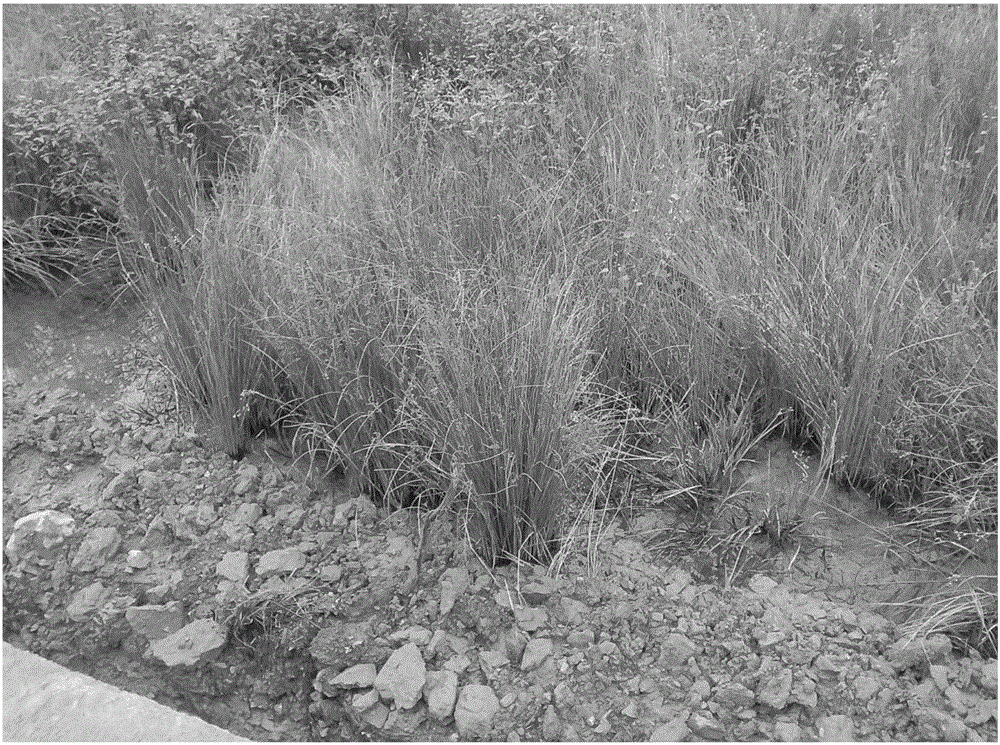Method for establishing American vicia high-frequency regeneration system
A high-frequency regeneration, wild pea technology, applied in the field of agricultural cultivation biology, can solve the problems of no research and patent publication, and achieve the effect of good technical effect, fast growth and reproduction, and simple operation.
- Summary
- Abstract
- Description
- Claims
- Application Information
AI Technical Summary
Problems solved by technology
Method used
Image
Examples
Embodiment 1
[0036] (1) Step 1
[0037] Put the explant material in 75% alcohol to sterilize for 30 seconds, take it out and rinse it with sterile water for 3 times, then immerse it in 0.1% mercuric chloride for sterilization for about 5 minutes, take it out and rinse it with sterile water 5 times; in a sterile environment, dip the explant material on the S1 medium for callus. S1 medium: honey.
[0038] (2) Step 2
[0039] S2 medium: an aqueous solution of 100 mg / L sodium α-naphthalene acetate and 100 mg / L potassium indolebutyrate.
[0040]The callus obtained in step S1 is immersed in the S2 medium towards the root end for 24 hours.
[0041] (3) Step 3
[0042] S3 medium: an aqueous solution of 100 mg / L sodium α-naphthalene acetate, 100 mg / L potassium indolebutyrate and 100 mg / L potassium dihydrogen phosphate.
[0043] The cuttings with good growth quality obtained in step 2 were inserted into 1 cm of wet sand substrate soaked with S3 medium; the culture conditions were 20° C., 2000 l...
Embodiment 2
[0047] (1) Step 1
[0048] Put the explant material in 75% alcohol to sterilize for 30 seconds, take it out and rinse it with sterile water for 3 times, then immerse it in 0.1% mercuric chloride for sterilization for about 5 minutes, take it out and rinse it with sterile water 5 times; in a sterile environment, dip the explant material on the S1 medium for callus. S1 medium: honey.
[0049] (2) Step 2
[0050] S2 medium: an aqueous solution of 200 mg / L sodium α-naphthalene acetate and 200 mg / L potassium indolebutyrate.
[0051] The callus obtained in step S1 is immersed in the S2 medium towards the root end for 24 hours.
[0052] (3) Step 3
[0053] S3 medium: an aqueous solution of 100 mg / L sodium α-naphthalene acetate, 100 mg / L potassium indolebutyrate and 100 mg / L potassium dihydrogen phosphate.
[0054] The cuttings with good growth quality obtained in step 2 were inserted into 1 cm of wet sand substrate soaked with S3 medium; the culture conditions were 20° C., 3000 ...
Embodiment 3
[0058] (1) Step 1
[0059] Put the explant material in 75% alcohol to sterilize for 30 seconds, take it out and rinse it with sterile water for 3 times, then immerse it in 0.1% mercuric chloride for sterilization for about 5 minutes, take it out and rinse it with sterile water 6 times; in a sterile environment, dip the explant material onto the S1 medium for callus. S1 medium: honey.
[0060] (2) Step 2
[0061] S2 medium: an aqueous solution of 400 mg / L sodium α-naphthalene acetate and 400 mg / L potassium indolebutyrate.
[0062] The callus obtained in step S1 is immersed in the S2 medium towards the root end for 24 hours.
[0063] (3) Step 3
[0064] S3 medium: an aqueous solution of 100 mg / L sodium α-naphthalene acetate, 100 mg / L potassium indolebutyrate and 100 mg / L potassium dihydrogen phosphate.
[0065] The cuttings with good growth quality obtained in step 2 were inserted into 1 cm of wet sand substrate soaked with S3 medium; the culture conditions were 20° C., 300...
PUM
 Login to View More
Login to View More Abstract
Description
Claims
Application Information
 Login to View More
Login to View More - R&D
- Intellectual Property
- Life Sciences
- Materials
- Tech Scout
- Unparalleled Data Quality
- Higher Quality Content
- 60% Fewer Hallucinations
Browse by: Latest US Patents, China's latest patents, Technical Efficacy Thesaurus, Application Domain, Technology Topic, Popular Technical Reports.
© 2025 PatSnap. All rights reserved.Legal|Privacy policy|Modern Slavery Act Transparency Statement|Sitemap|About US| Contact US: help@patsnap.com

